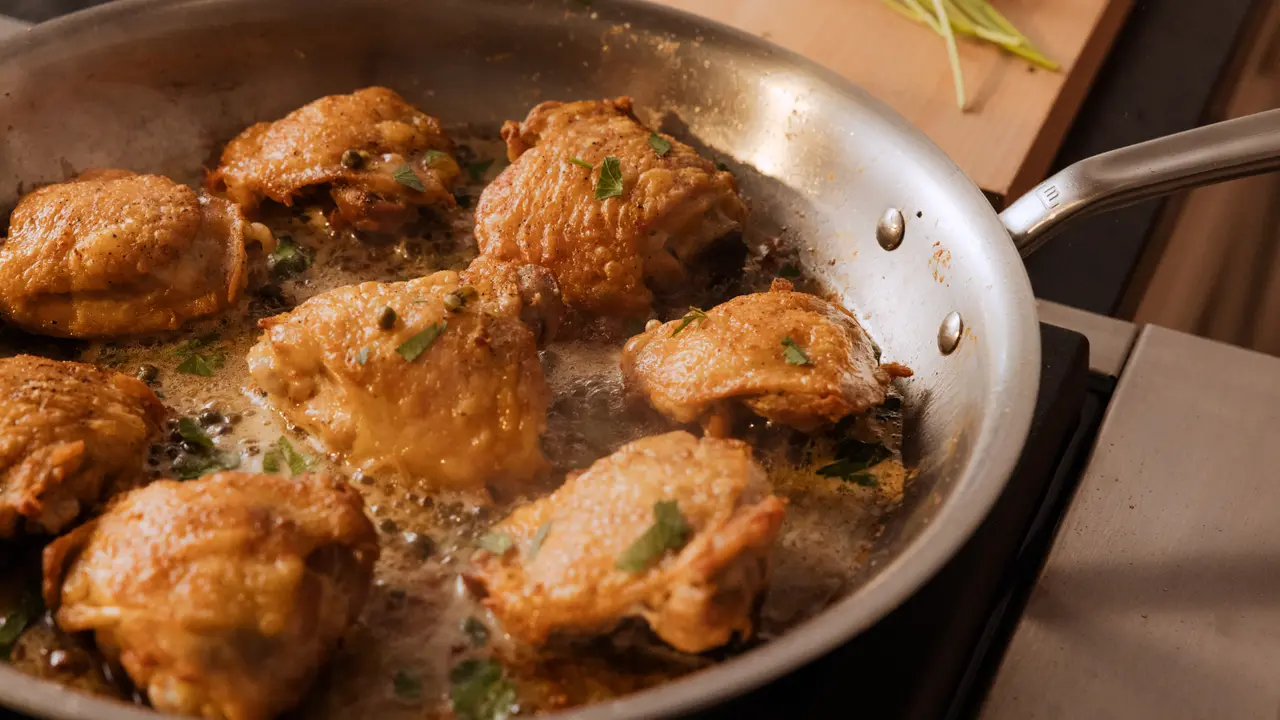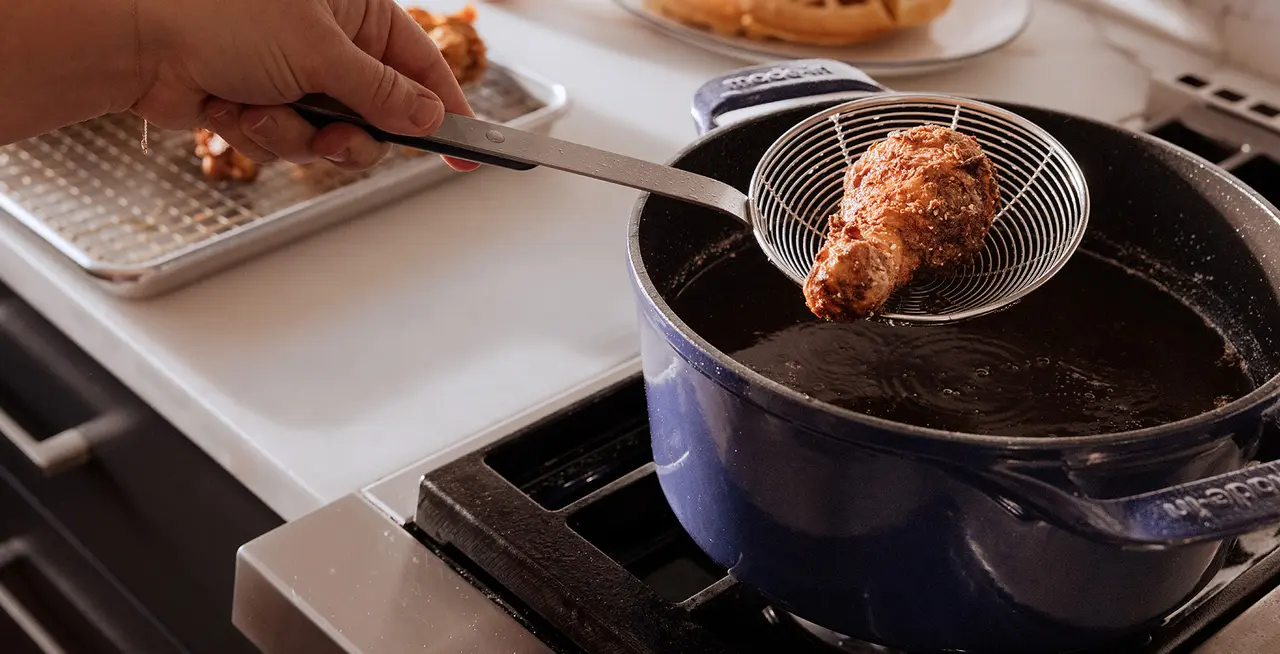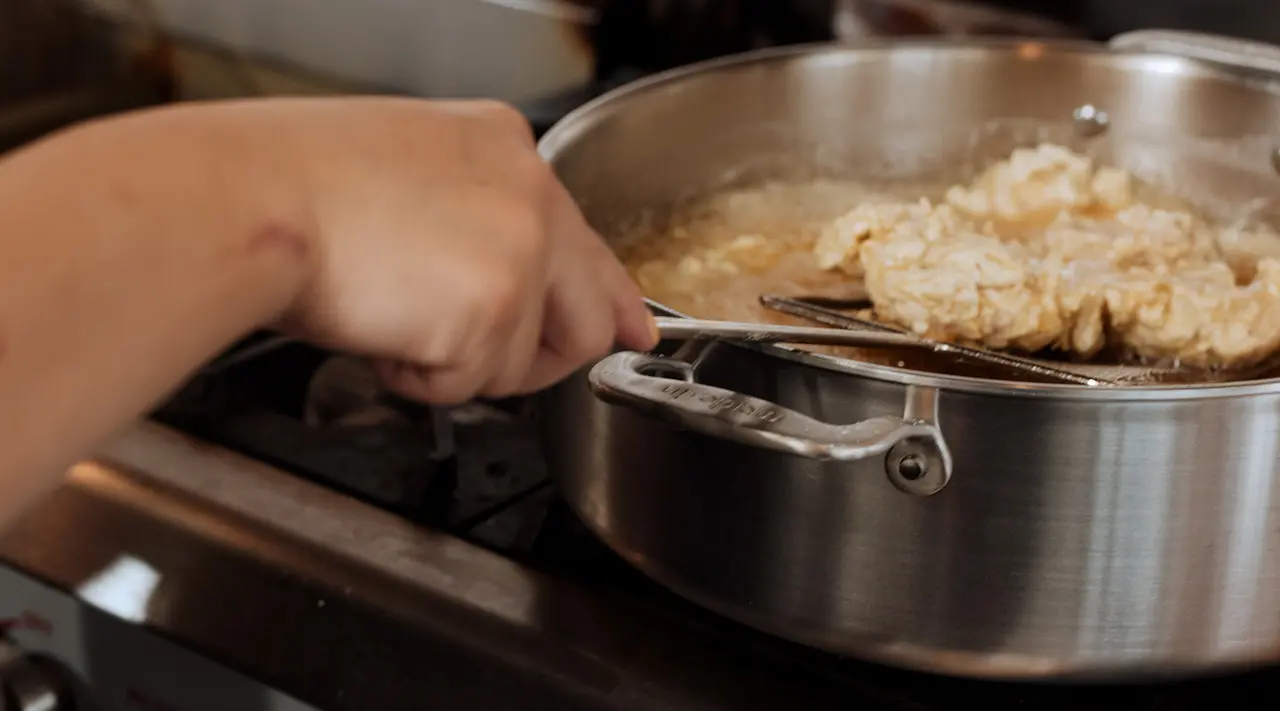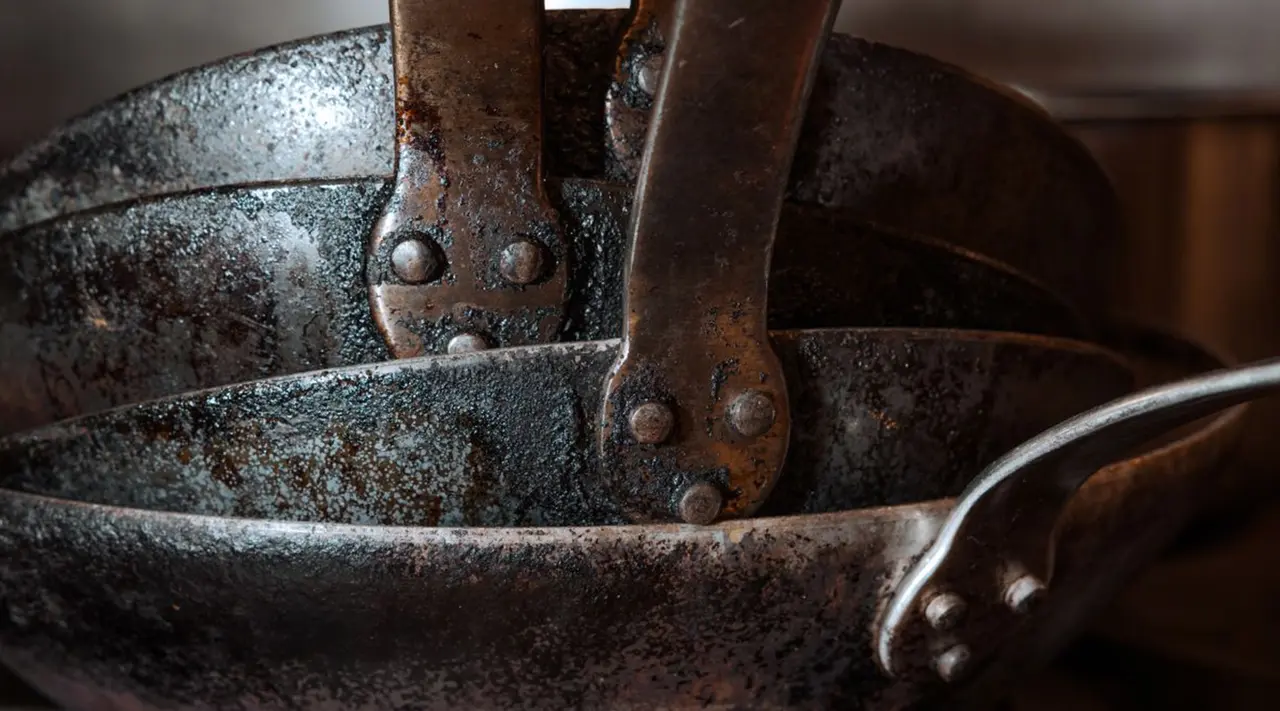The less fun but inevitable and necessary part of cooking is cleaning up after. And sometimes, especially if you’re cooking over high heat, searing, or frying, you’ll have a particularly messy oil splatter. Frying bacon, searing tofu, shallow frying dumplings, deep frying doughnuts—it can all lead to oil splatters on your stove or countertops. It’s best to clean oil splatters soon after they occur.
Not only is it easier, but untreated oil splatters can lead to stains and damage surface over time. (Plus, greasy splotches on kitchen surfaces are just gross.) Below, we’ll discuss how to clean oil splatters so your kitchen will sparkle like new—or at least sparkle as much as it did before you cooked dinner.
Step-by-Step Guide to Cleaning Oil Splatter

If you’ve ever moved into a new space and set about cleaning the kitchen only to wonder “has this ever been cleaned before?” then you know how difficult it can be to clean away accumulated oil stains. Oil can harden, making it that much more difficult to clean for future you. Oil can also go rancid and smell bad, it can attract insects and other pests, and grease fires are a danger as well—all the more reason to get it clean. Follow the below steps to tackle oil splatter before it becomes a problem.
Step 1: Blot or Wipe Fresh Oil Splatter
Use paper towels or reusable dishcloths to absorb excess oil on your stove, counter, and cookware. Do this immediately after cooking, when the oil is fresh. It’s obvious, but worth reiterating: when cleaning oil from cookware, let it cool down first before cleaning it.
Step 2: Apply a Cleaning Solution
Spray or otherwise apply your preferred cleaning solution, whether it’s an all-purpose surface cleaner for the stovetop and counter or dish soap for your cookware. A cleaning solution (i.e. more than just water) is necessary to help cut through and remove oil from surfaces.
Step 3: Scrub Gently with the Right Tools
Scrub away the oil with a soft sponge, cloth, or brush that won’t scratch surfaces or your cookware—meaning leave the steel wool in the drawer for this one.
Step 4: Rinse and Wipe Dry
Use a damp dishcloth or sponge to rinse away any remaining residue, then use a clean cloth to wipe the surface dry.
Deep Cleaning Methods for Stubborn Oil Stains
Usually it really is that easy. Sometimes, though, you’ll need to take additional steps to remove oil splatters and stubborn stains. If soap and water or a cleaning spray aren’t cutting it, there are a few other methods you can try.
First up: vinegar. Vinegar is a natural solvent, meaning it dissolves hard-to-clean residue like oil. Use distilled white vinegar, which is both cheap and free from additives like sugar. Use a cloth to dab it onto a surface, or fill a spray bottle and spray liberally over the affected surface. Let sit for up to 30 minutes, then scrub with a damp sponge or cloth, rinse, and dry.
If that doesn’t work, add baking soda to the mix. Sprinkle a liberal amount of baking soda onto the surface, then spray with vinegar (so that the resulting paste will be a ratio of about 2 parts baking soda to 1 part vinegar). Let this mixture bubble and sit for up to 30 minutes, then scrub, rinse, and dry.
If you’re still out of luck, then turn to a heavier duty degreaser, following package directions to remove the oil. Note that since degreasers typically contain chemicals, this is only recommended for surfaces that food does not come in contact with. Don’t use a degreaser on your cookware.
Cooking Tips to Minimize Oil Splatter

Now that you know how to clean oil splatters, there are a few things you can do to minimize oil splatter from even happening during the cooking process.
Oil splatters when moisture hits a hot pan filled with oil or another cooking fat. You’ll see more oil splattering when your food contains more moisture—think freshly washed greens, a slab of tofu, or a fresh cut of meat. While you can reduce the moisture by patting ingredients dry, to some extent, a little splattering is inevitable, especially when ingredients are being added to the pan.
Splattering is also more likely when cooking over higher temperatures. Reduce the heat when adding ingredients to minimize splattering. Opt for a pan with higher sides, too, which will better contain messes. A mesh splatter screen, meant to rest over a variety of pots and pans, is also great since the mesh will greatly reduce splatters while still allowing evaporation. If you don’t have a splatter screen, you can also prop a lid over the pot or pan.
Ready to Cook?
While a little mess is bound to happen when you’re cooking, if you tackle it soon after it occurs, it won’t lead to a bigger problem. And remember: choosing the proper cookware for sauteing, searing, and frying will go a long way in preventing oil splatters from the beginning.






























